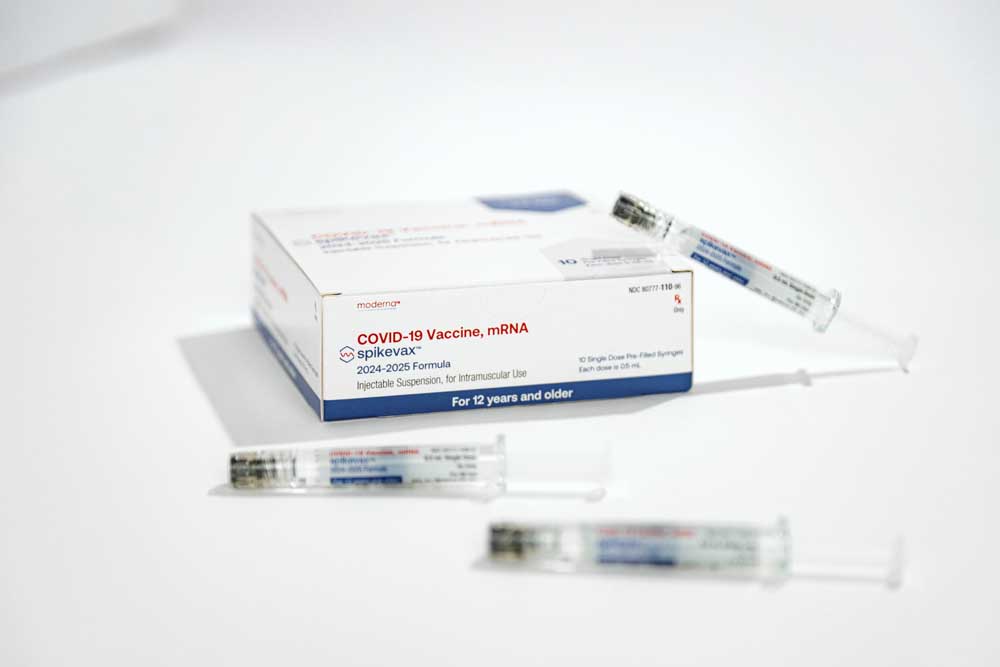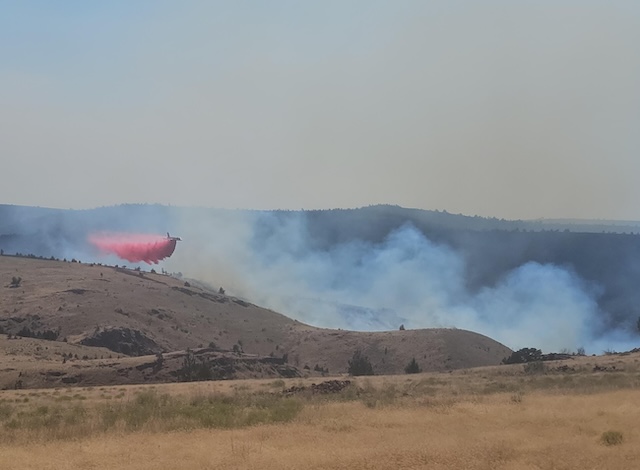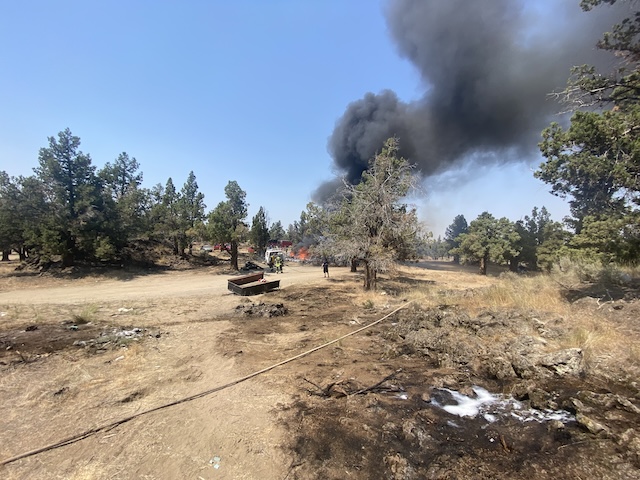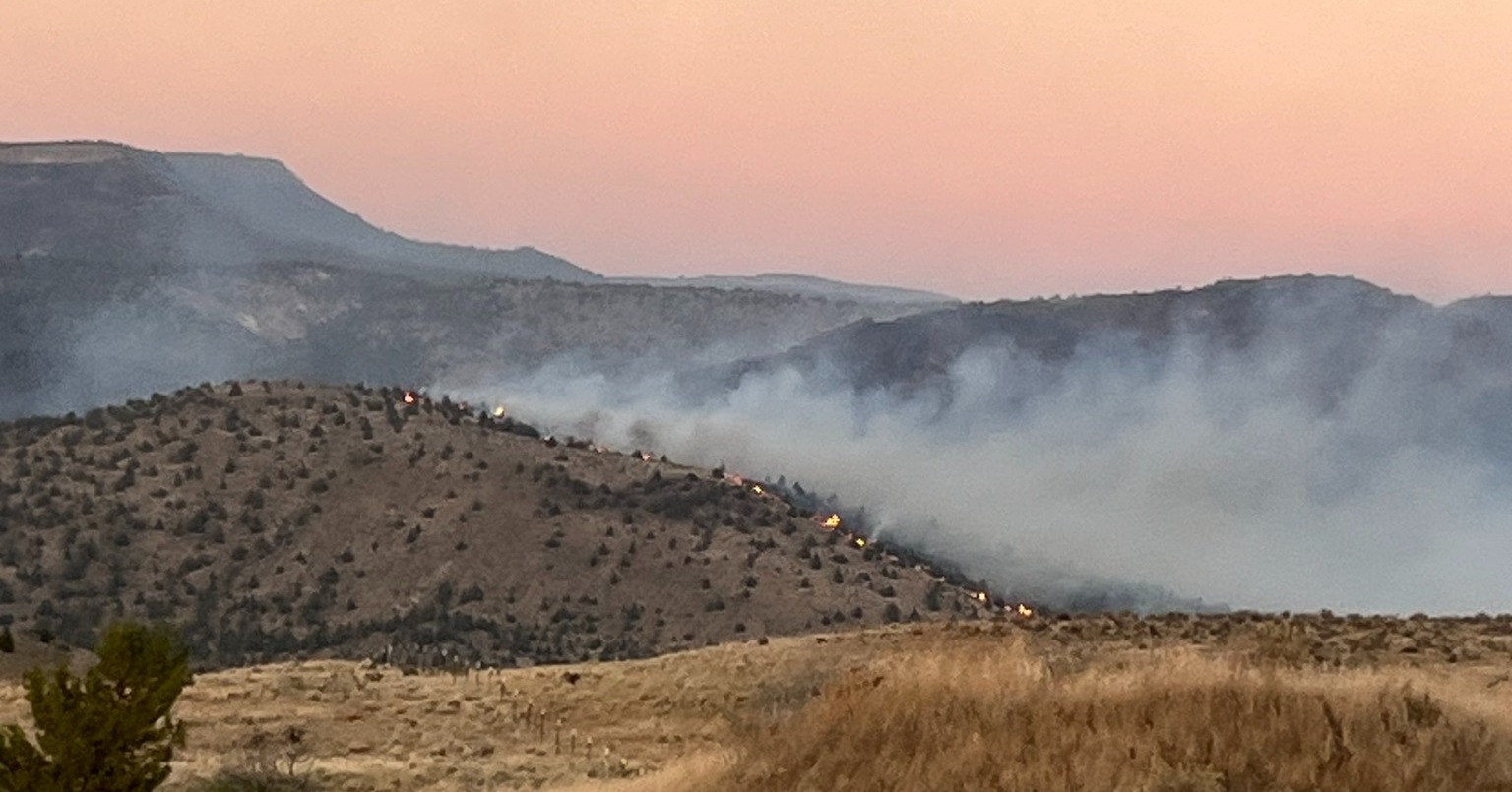COVID-19 on the rise in Central Oregon
Published 12:20 pm Thursday, August 29, 2024

- This photo provided by Moderna shows packaging and syringes for the company's updated COVID vaccine for ages 12 and older approved by the U.S. Food and Drug Administration on Aug. 22.
Summer travel still may be upon Central Oregon, but so is COVID-19.
Samples of wastewater taken from around the state show that Sunriver is experiencing a rise in COVID-19, but Bend is remaining the same, according to the Oregon Health Authority wastewater COVID-19 map. But test positivity rates in Central Oregon are up.
Trending
“COVID is really high right now, according to surveillance tracking,” said Emily Horton, Deschutes County Health Services public health program manager. “It is something we should be concerned about. COVID death rates are coming down, but that doesn’t mean it can’t cause serious illness.
“The difference is we have immunity now, either from natural immunity or from vaccines. In the beginning of COVID, we didn’t have that.”
Statewide the increase in the number of COVID-19 cases began in late April, said Jonathan Modie, a Oregon Health Authority spokesman.
“We always anticipate another rise in COVID-19 cases in Oregon as we head into fall and winter and people move indoors for events and activities around the holiday season,” Modie said. “The strain on the hospitals during respiratory virus season (COVID-19, seasonal flu and respiratory syncytial virus) is always a big concern for OHA and local public health authorities.”
In Central Oregon, the number of emergency department visits for COVID-19 symptoms increased in Crook, Deschutes and Jefferson counties in August, according to data from Deschutes County Health Services website.
There have been more patients with COVID-19 coming to St. Charles Health System’s four hospitals, but not a surge of them, said Dr. Cynthia Maree, St. Charles Health System medical director of infection prevention services. The volume of COVID-19 circulating in town is affecting health care workers, too, said Maree.
Trending
“We are eager to have the updated vaccine available for our caregivers and the community,” said Maree.
Nationwide, COVID-19 is considered “very high,” according to wastewater data. The data show that COVID-19 was most prevalent in the Western part of the country and lowest in the Midwest, according to the CDC charts for mid-August. Wastewater sampling can show how much of the virus is being shed in a community.
The Centers for Disease Control and Prevention still recommends that people who are immune compromised should consider wearing a mask in crowded places. In addition, public health officials recommend that someone with cold or flu-like symptoms should stay home.
The CDC recommends that anyone age 6 months or older should get a COVID-19 vaccination. A new vaccine that is intended to address new variants was recently approved by the U.S. Food and Drug Administration, but is several weeks from being distributed, Horton said.
Once available, public health officials urge everyone to get a vaccine for COVID-19 and the flu, Horton said.
“For some people, the flu is serious and can be the cause of death,” Horton said. “But for others, it’s not so serious. The gap between the flu and COVID-19 risk is decreasing. COVID-19 is becoming more like the flu in terms of risk, but we’re not completely there yet.
“Flu still poses a risk.”
To minimize risk, public health officials recommend that people should wear masks while traveling. A mask continues to be the best protection, as long as it covers both the mouth and nose.
Since the pandemic was declared in March 2020, COVID-19 has become pretty much as common as a cold, Modie said. In fact, there’s little differences in early symptoms between RSV, the flu and COVID-19, unless tested, Modie said.
“At this point, with continued transmission but widespread immunity from vaccination and previous infection, COVID-19 is an endemic — something that will continue to circulate at low levels, with occasional bumps in transmission, that we manage with an annual vaccine and other prevention measures.”








